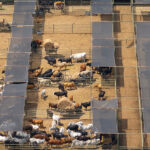- Articles, CBRNE, Emergency Management, Emergency Medical Services, Fire, Hazmat, Hospitals, Law Enforcement, Military, Public Health
- by: Rodney Andreasen
Active shooter survival instruction has become a standard application within institutions to the point that it now rivals the training in the days of the Cold War for nuclear attack survival. “Duck and Cover” drills of the past have now become the “Run, Hide, and Fight” drills applied to classrooms, businesses, hospitals, and other entities. Law enforcement agencies and other first responders have developed response methods and tactics that have become routine and are effectively applied when these incidents occur. In the case of schools, the application of these tactics and methods increases as agencies practice response techniques, normally at the beginning of the school year. Active shooter training for teachers, workers, and others continues to accelerate to ensure people are ready to respond.
These trainings and response applications are essential and should be part of everyone’s operational planning to survive attacks. However, one key piece has been missing for many years as the focus remains on response. Perhaps an event could be stopped or mitigated before it ever happens, thus reducing the need for the response or the application of these techniques. Again, the response and active shooter survival training are critical and should not be discounted. However, physical security measures or policies that were initially designed to stop the active shooter often fail.
“Active shooter trainings can help prevent some injuries and deaths. Preventing the attack from occurring should be the ultimate goal.”
The Robb Elementary shooting in Uvalde, Texas, warns of the dangers active shooters pose when preventative methods fail. Not every case will involve staff who have been properly trained in advance or have an immediate response from first responders. Therefore, the focus should be on a whole community application to prevent, prepare for, and respond to active assailants. Crime Prevention Through Environmental Design (CPTED) applications can provide one side of a triangle application process to stop or mitigate attacks. CPTED is not a new process but one that continues to find applications to numerous entities to help prevent incidents from occurring. CPTED can increase the security and ownership of an associated property or facility.
The International Crime Prevention Through Environmental Design Association defines CPTED as:
[A] multi-disciplinary approach of crime prevention that uses urban and architectural design and the management of built and natural environments. CPTED strategies aim to reduce victimization, deter offender decisions that precede criminal acts, and build a sense of community among inhabitants so they can gain territorial control of areas, reduce crime, and minimize fear of crime.
4 Crime-Prevention Areas and Their Applications
Although this definition provides a basic application of CPTED theories to prevent crime, it goes much deeper and further in its application to prevent active assailants. CPTED applications comprise four primary crime-prevention areas:
- Natural surveillance
- Natural access control
- Territorial reinforcement, and
- Maintenance
Natural surveillance is a way to observe, without obstruction, property under the control of or in use by the intended users. Although there are arguments for and against having numerous windows in a facility, more windows would allow for the observation of areas that may otherwise not be visible from the facility. Although excellent for many applications, closed-circuit television (CCTV) cameras may not supplant the surveillance capability of numerous people watching a specific area. Additionally, if individuals feel they are being observed, even though they may not be, they could be deterred.
Lighting is another aspect of this application. Although this may not impede an active assailant, it might deter criminal activity and illuminate areas others may use for nefarious reasons. Lighting is one of the most effective crime prevention applications in terms of cost savings and deterrence. Lighting systems utilizing light-emitting diodes (LED) are the most effective lighting systems available and provide cost savings through the longevity of the systems and reduced electricity costs. A lighting survey can be conducted for any facility to determine where lighting is lacking and what equipment is needed.
Natural access control reduces points of entry to a property through the use of various means – including vegetation or fencing – to obtain this objective. However, this does not mean turning a facility into a prison-like campus or high-security complex. Proper fencing can provide a deterrent to intrusion, territorial reinforcement, or additional reinforcement measures. In many cases, fences around facilities do not meet height requirements and provide little in the way of a deterrent. However, hostile vegetation such as Pyracantha (also known as Firethorn, Bouganvilla, or Rose bushes) can enhance the effect of fences and beautify the facility. Shrubbery, as previously mentioned, contains thorns and can deter, and preclude, individuals from even attempting to breach the fence.
Territorial reinforcement is a means of using items that show ownership by those occupying the identified space. As previously mentioned, fencing could form one aspect of the process, along with landscaping, signs, and pavement treatments. Anything that can exhibit activity and creates an active space that shows ownership of the area and indicates delineation from public, semi-public, and private space will assist in this application. Even a small picket fence, or any of the previously mentioned hostile vegetation, can announce that the area behind it is private and provide the identified territorial reinforcement.
The final area involves maintenance. In its strictest definition, maintenance can be split into two specific applications as it applies to schools and school facilities. The first applies directly to maintaining the grounds where the school is located. Grounds that are unkept show that the facility is not valued and that the school may not care. Grass that is not cut or shrubbery not trimmed is a clear example of this belief. Additionally, landscaping that blocks the view of specific areas may lead to an incident occurring or prevent the identification of assailants trying to enter a facility. These issues can cause activity to continue until it is too late to respond, thus negating further prevention measures. Therefore, trimming trees and shrubbery to a recommended height to provide maximum observation are key considerations.
The second aspect of maintenance can involve the care afforded to the physical aspect of the campus. Graffiti left in place, doors and locking systems not repaired, or light systems not serviced, along with other aspects, invite issues that could have been solved by a simple fix or replacement. The cost of maintenance is far cheaper than the cost of paying damages required after an incident occurs.
Sadly, some argue that facilities cannot afford to implement such actions to prevent issues beyond the active assailant. There has been a great deal of overreliance on CCTV cameras and other devices to protect schools and other facilities. Although systems such as these are necessary, they can provide a false sense of security if not employed correctly and can create dangerous weaknesses in other areas.
Numerous studies have indicated that when schools and other facilities are turned into fortified facilities, the impact may override the learning environment as well as the working environment. There must be a healthy balance between learning and security, providing adequate protection for those attending school or working at a particular facility. The CPTED concept could provide a value-added aspect by reducing the feeling of a prison environment while increasing the safety and security aspect for students, teachers, and other personnel. By using CPTED applications and including the students and teachers in the application, everyone becomes part of the ownership process for their school, facility, or organization.
CPTED applications, along with training for active shooter survival and proper response applications, should form a balanced program to prevent and respond to the threat of active assailants or other threats. A value-added aspect of CPTED applications can be achieved by increasing ownership by all who reside on the property and inside the facility, as well as providing a recipe for a successful protection program.
Facilities can no longer avoid applying principles and programs associated with CPTED. It is impossible to place a cost on the life of a student, a teacher, or an employee at any level; they are immeasurable. Considering the value-added aspect of CPTED applications for a school environment, the cost is minimal and should provide a pathway for increased protection, safety, and security.

Rodney Andreasen
Rodney Andreasen is a retired emergency management director from Jackson County, Florida. After serving approximately 20 years in that position, he retired in December 2020. Before that, he served 21 years in the Air Force, retiring as a Master Sergeant. He currently owns Xspct LLC providing consulting services on active shooter prevention and Crime Prevention Through Environmental Design. He is a graduate of the University of Southern Mississippi with a master’s degree in Technical and Occupational Education, Auburn University of Montgomery with a master’s degree in Justice and Public Safety, and the Naval Postgraduate School with a master’s degree in Security Studies Homeland Security and Defense.
- Rodney Andreasenhttps://domprep.com/author/rodney-andreasen
- Rodney Andreasenhttps://domprep.com/author/rodney-andreasen
- Rodney Andreasenhttps://domprep.com/author/rodney-andreasen
- Rodney Andreasenhttps://domprep.com/author/rodney-andreasen






